Abstract
1. The effect of the velocity of shortening on the power developed by the muscles in sprint running was studied by measuring the mechanical work done to accelerate the body forward from the start to about 34 km/hr.
2. The work was measured at each step from the data obtained by means of a platform sensitive to the force impressed by the foot.
3. Almost the totality of the positive work done during the first second from the start is found as an increase of the kinetic energy of the body. However, as the speed of the run rises, air resistance and particularly the deceleration of the body forward, taking place at each step, rapidly increase, limiting the speed of the run.
4. The average power developed by the muscles during the push at each step increases with the velocity of running reaching 3-4 h.p. at the maximal speed attained.
5. At low speed the contractile component of the muscles seems to be mainly responsible for the power output, whereas at high speed (25-34 km/hr) an appreciable fraction of the power appears to be sustained by the mechanical energy stored in the `series elastic elements' during stretching the contracted muscles (negative work) and released immediately after in the positive work phase.
Full text
PDF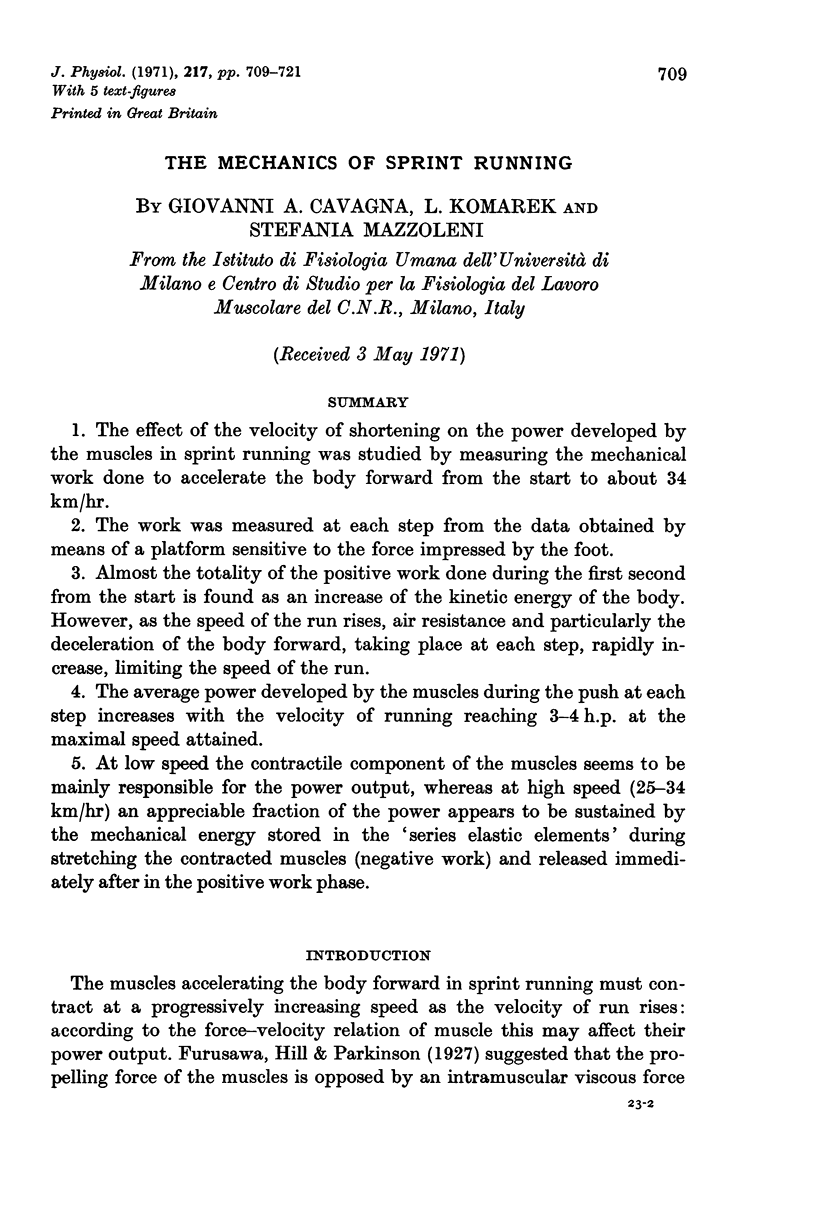
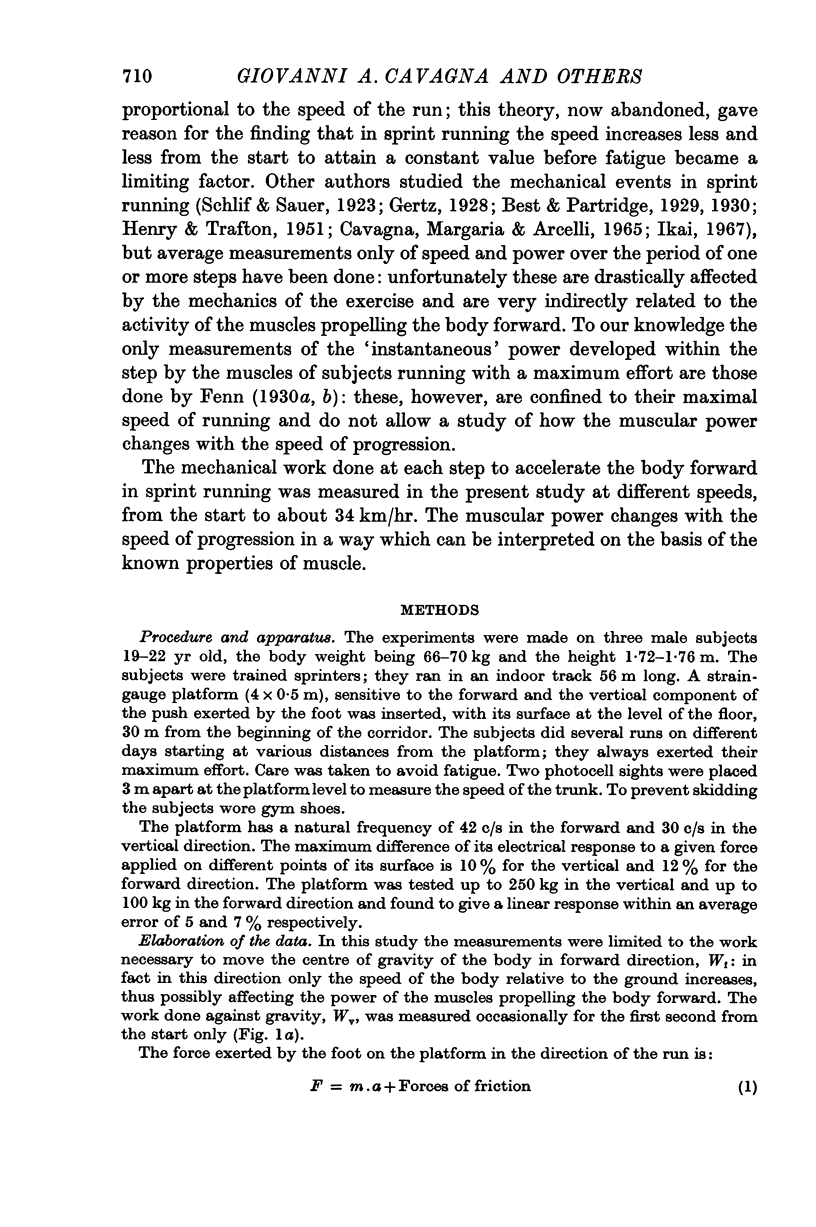
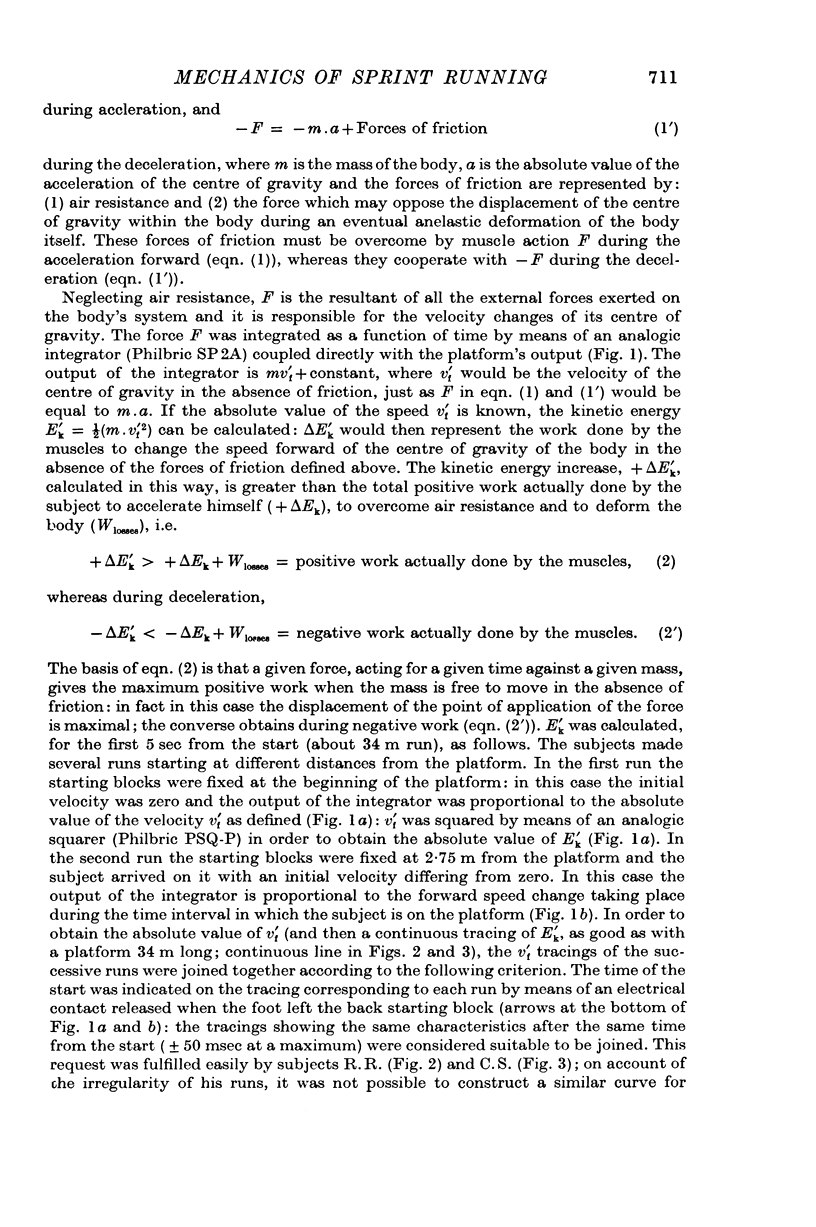
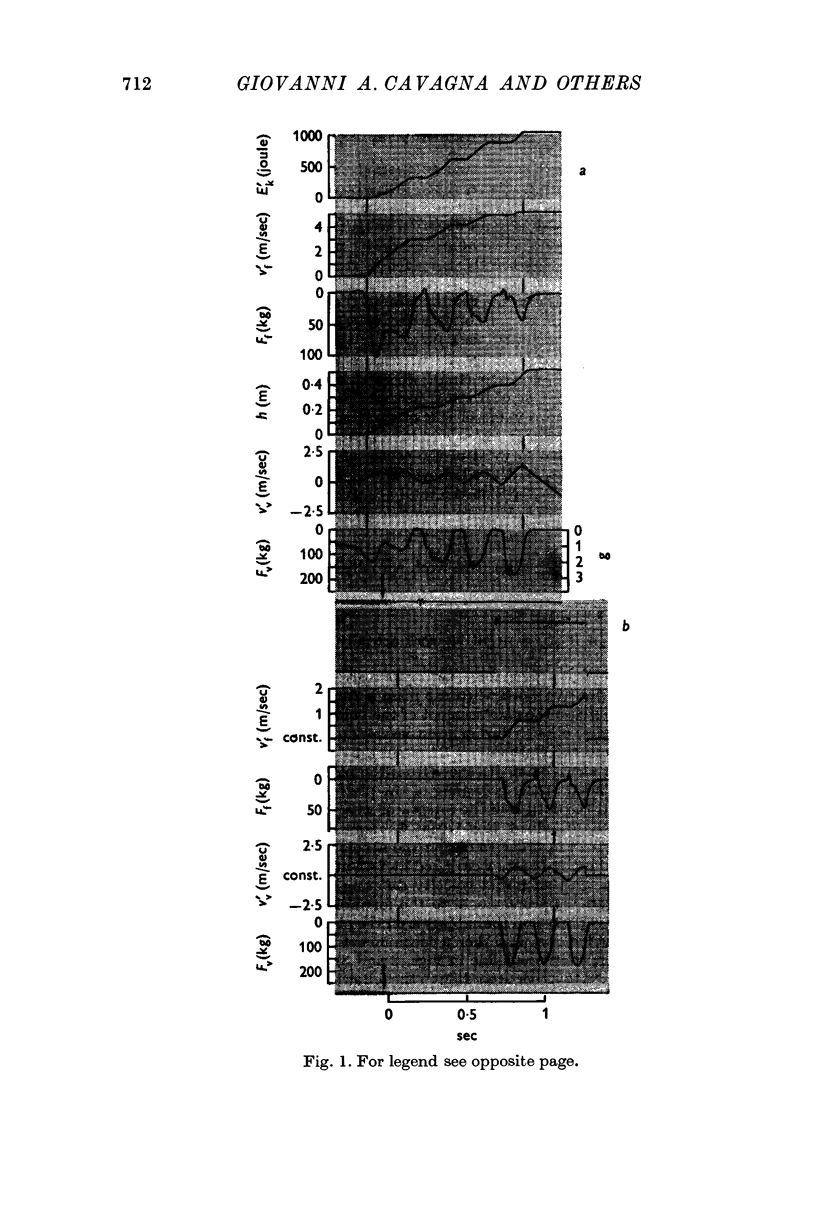
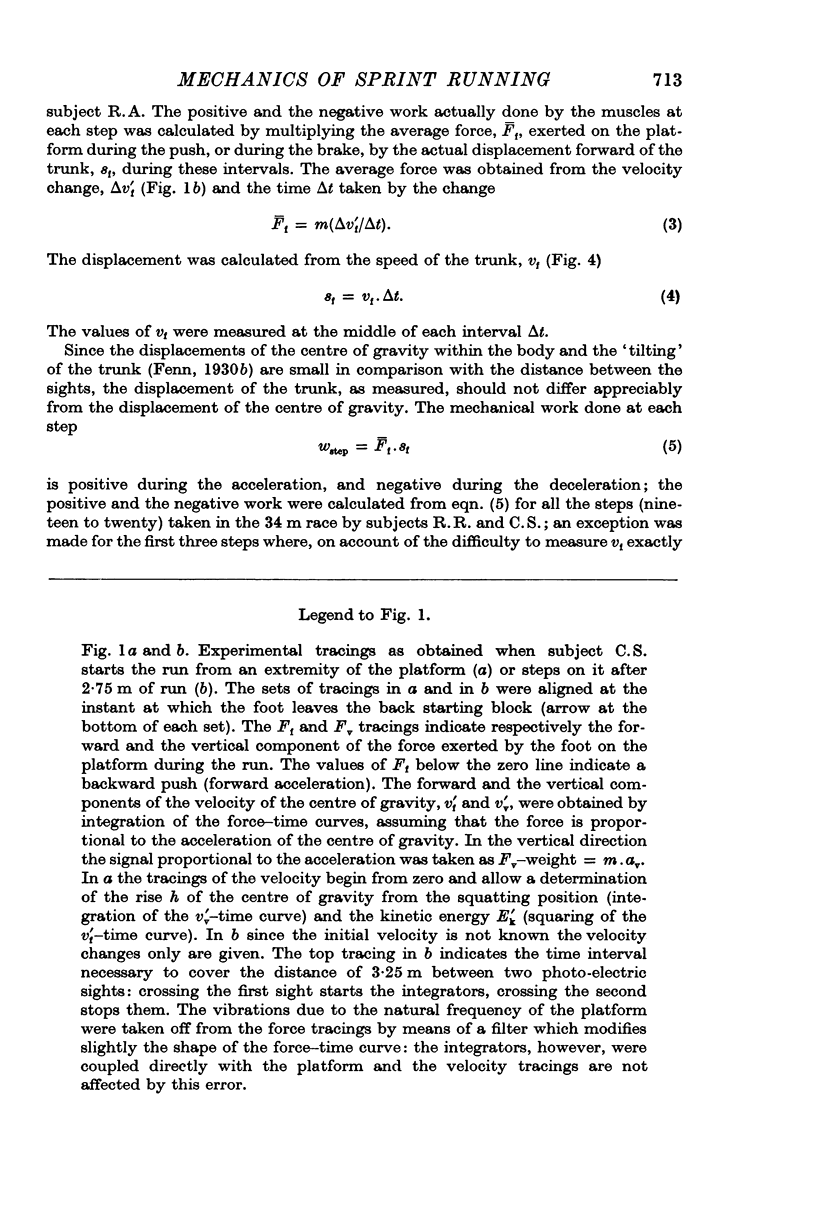
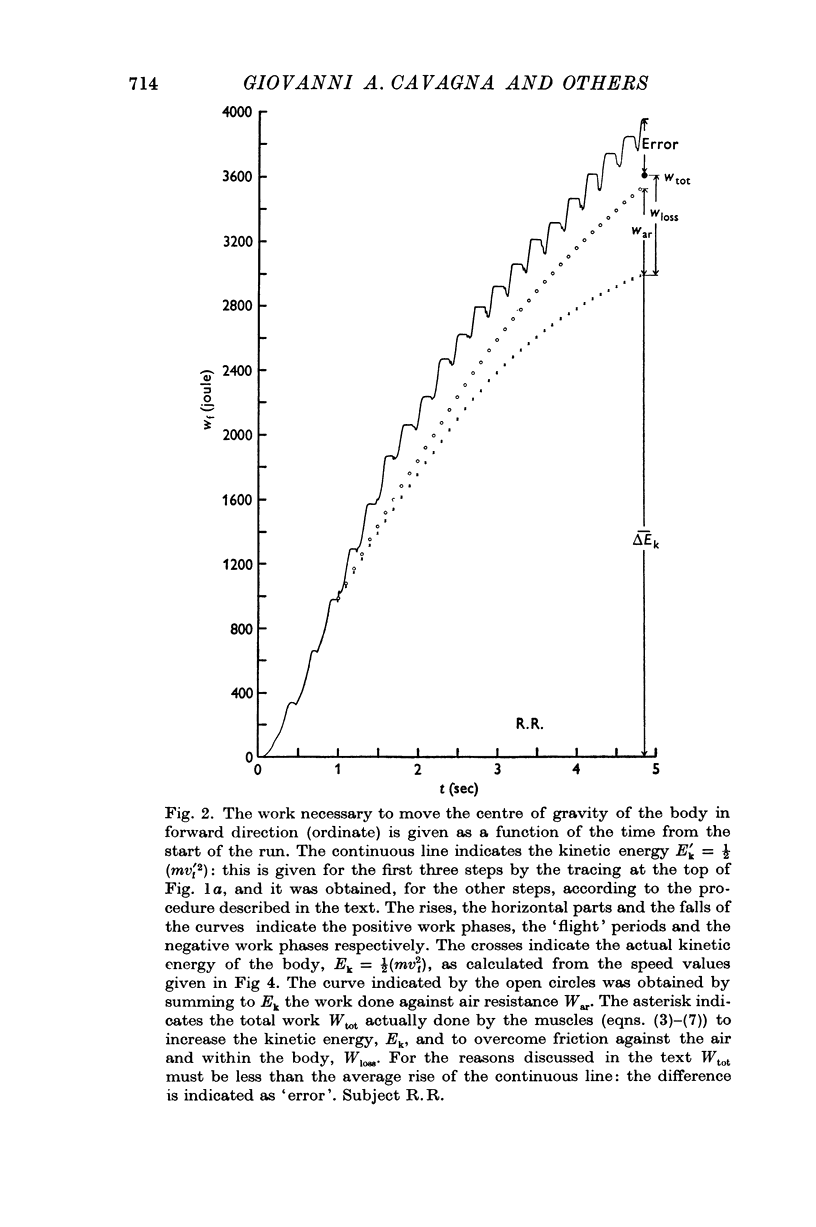
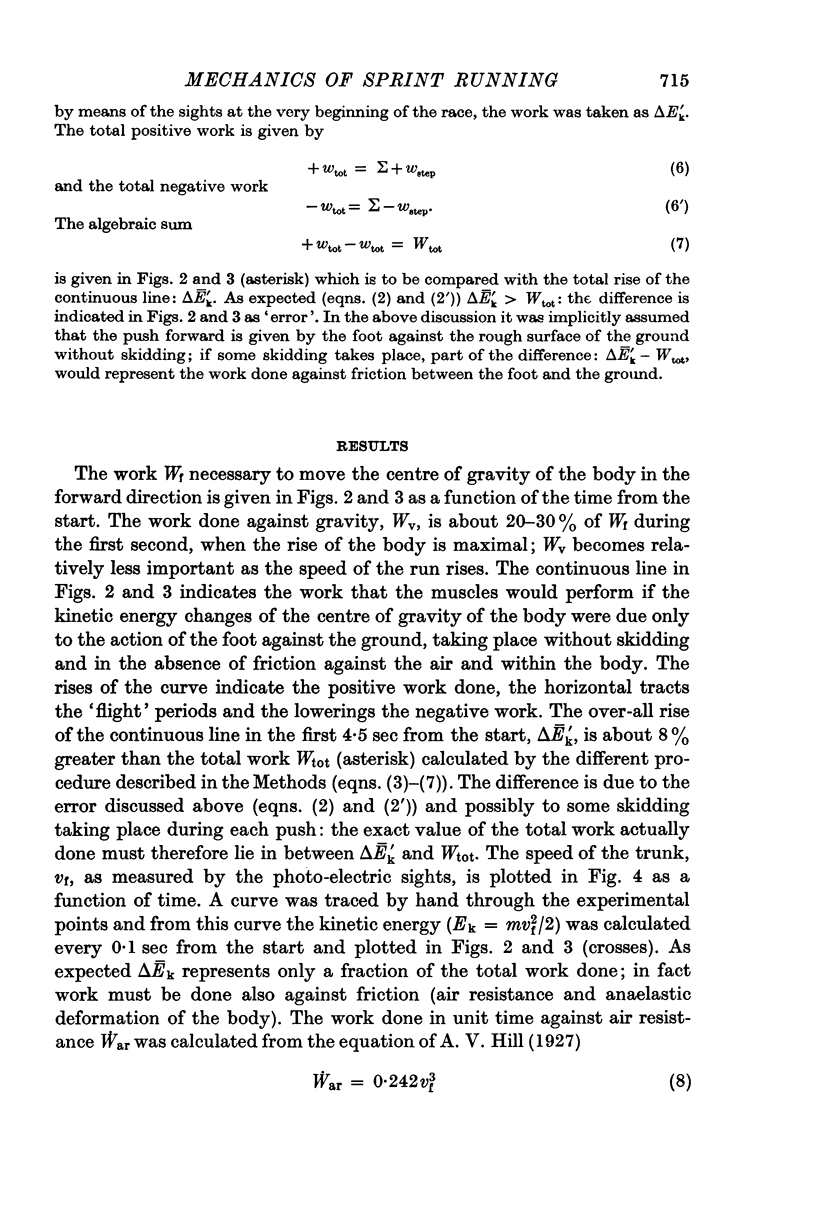
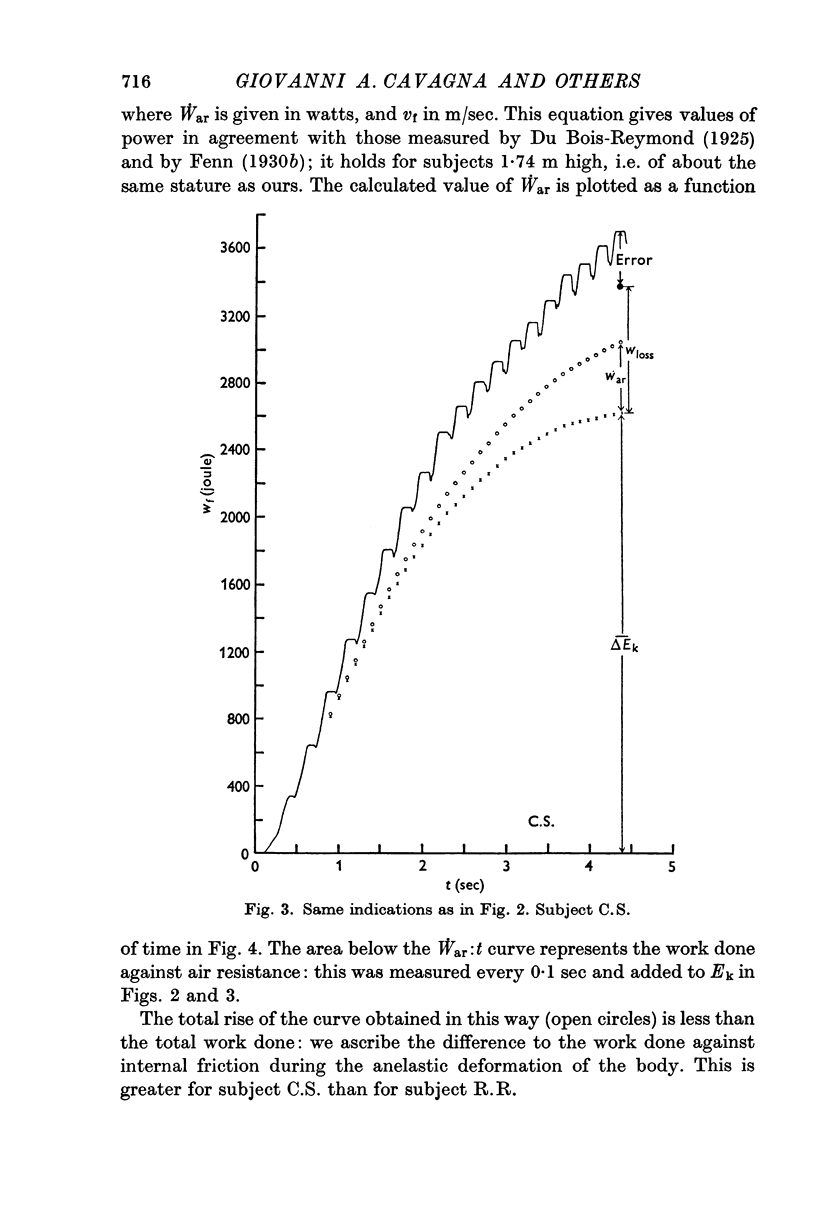



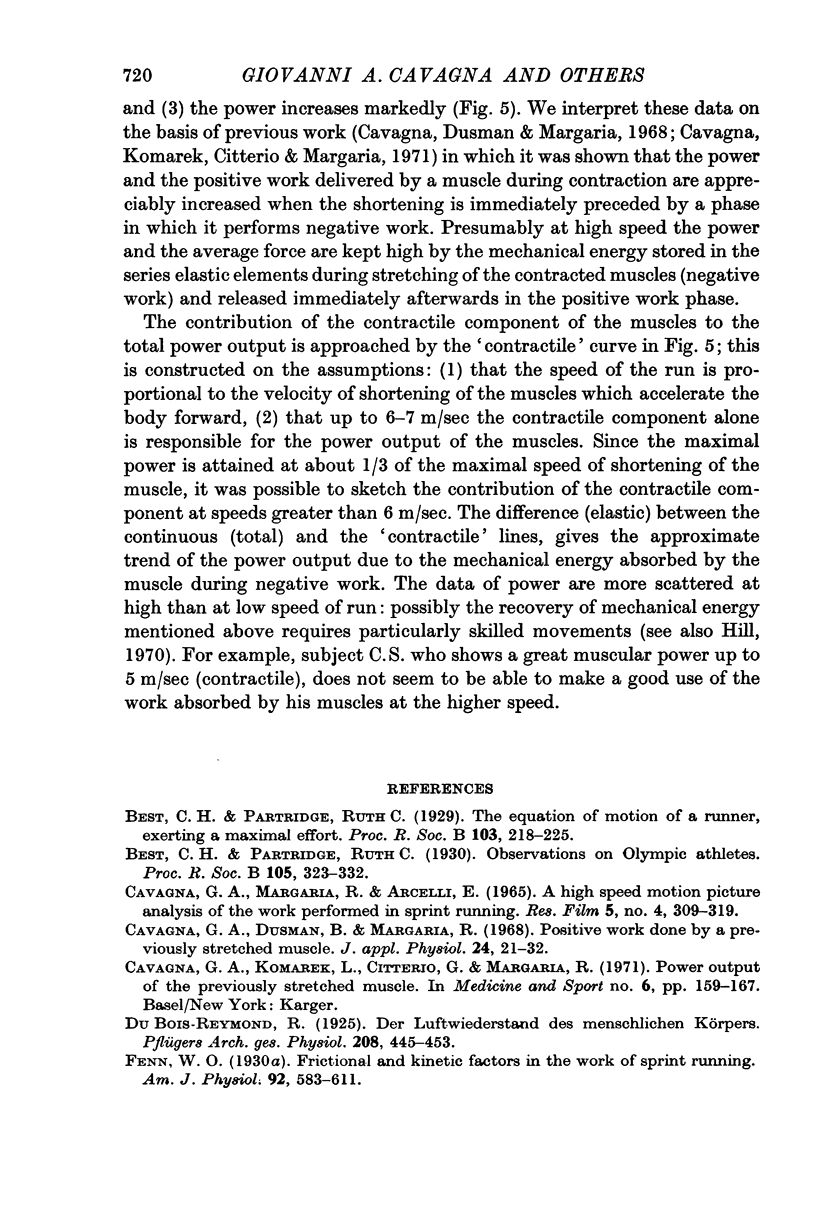
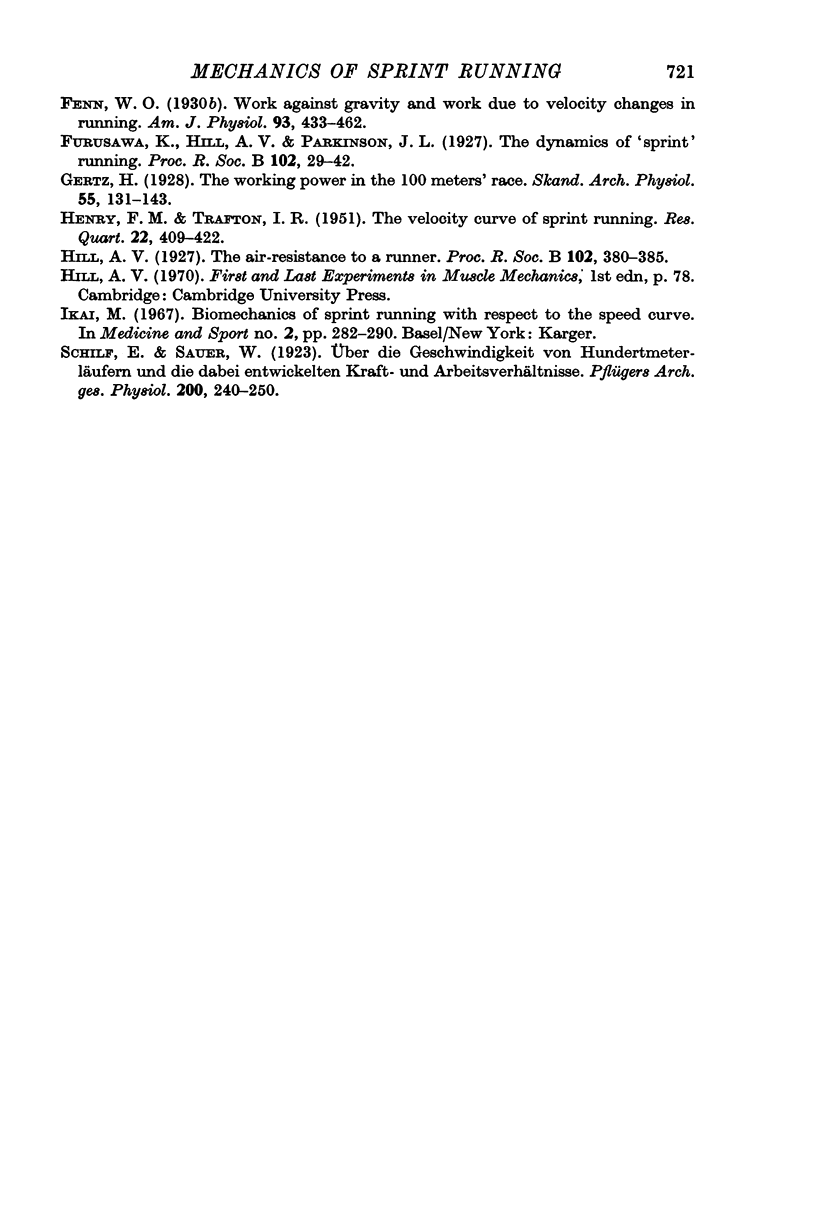
Images in this article
Selected References
These references are in PubMed. This may not be the complete list of references from this article.
- Cavagna G. A., Dusman B., Margaria R. Positive work done by a previously stretched muscle. J Appl Physiol. 1968 Jan;24(1):21–32. doi: 10.1152/jappl.1968.24.1.21. [DOI] [PubMed] [Google Scholar]



